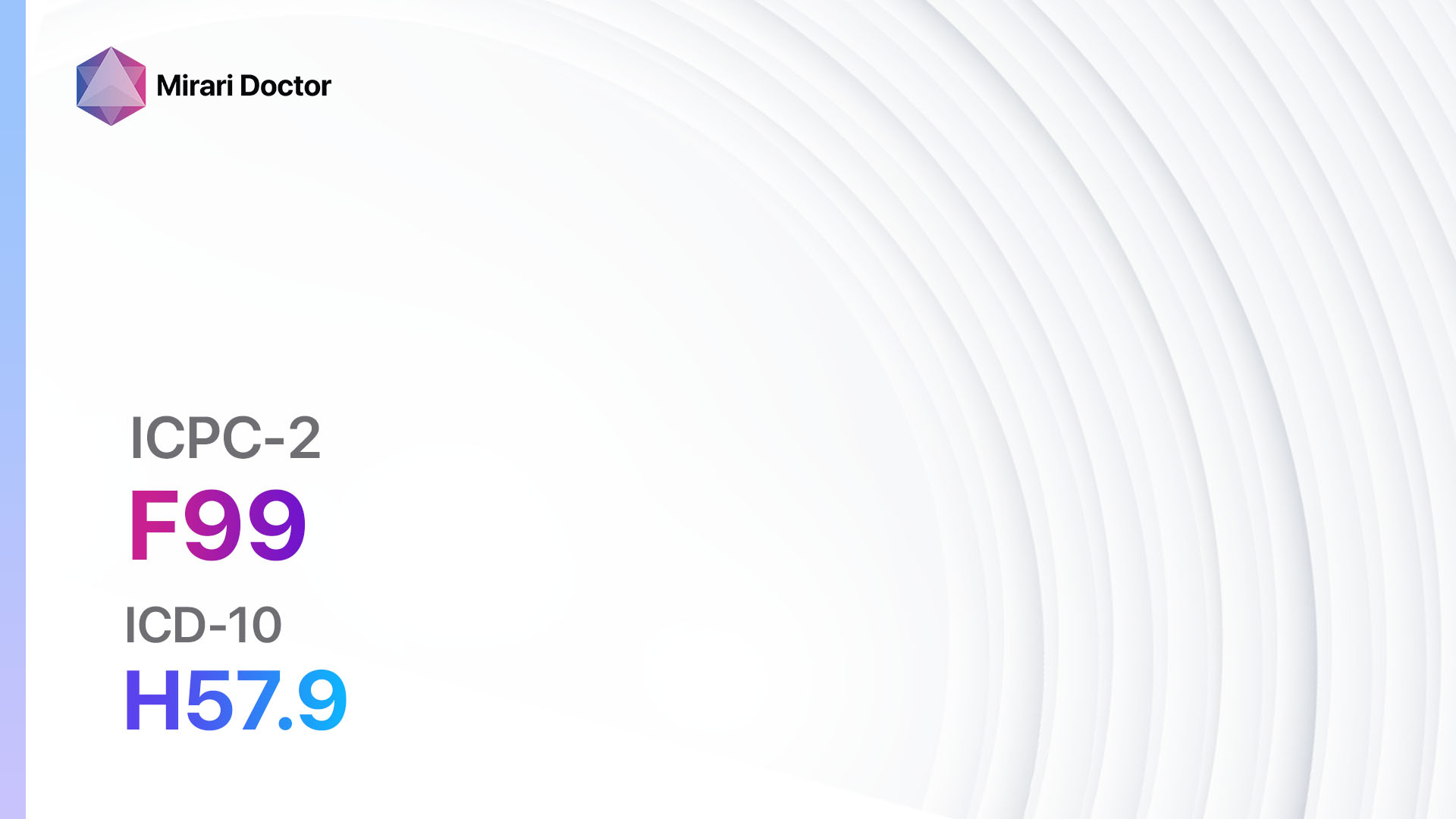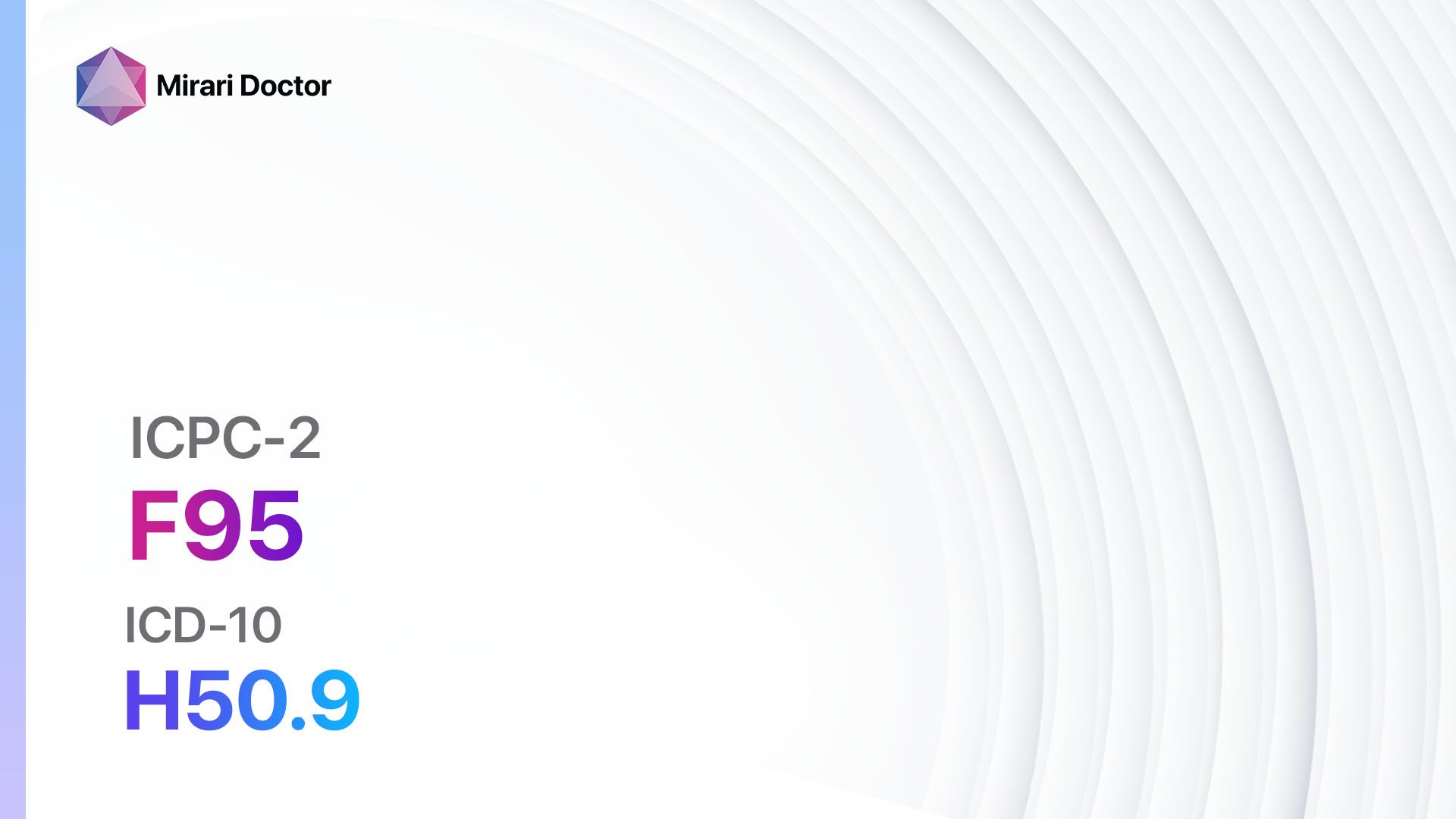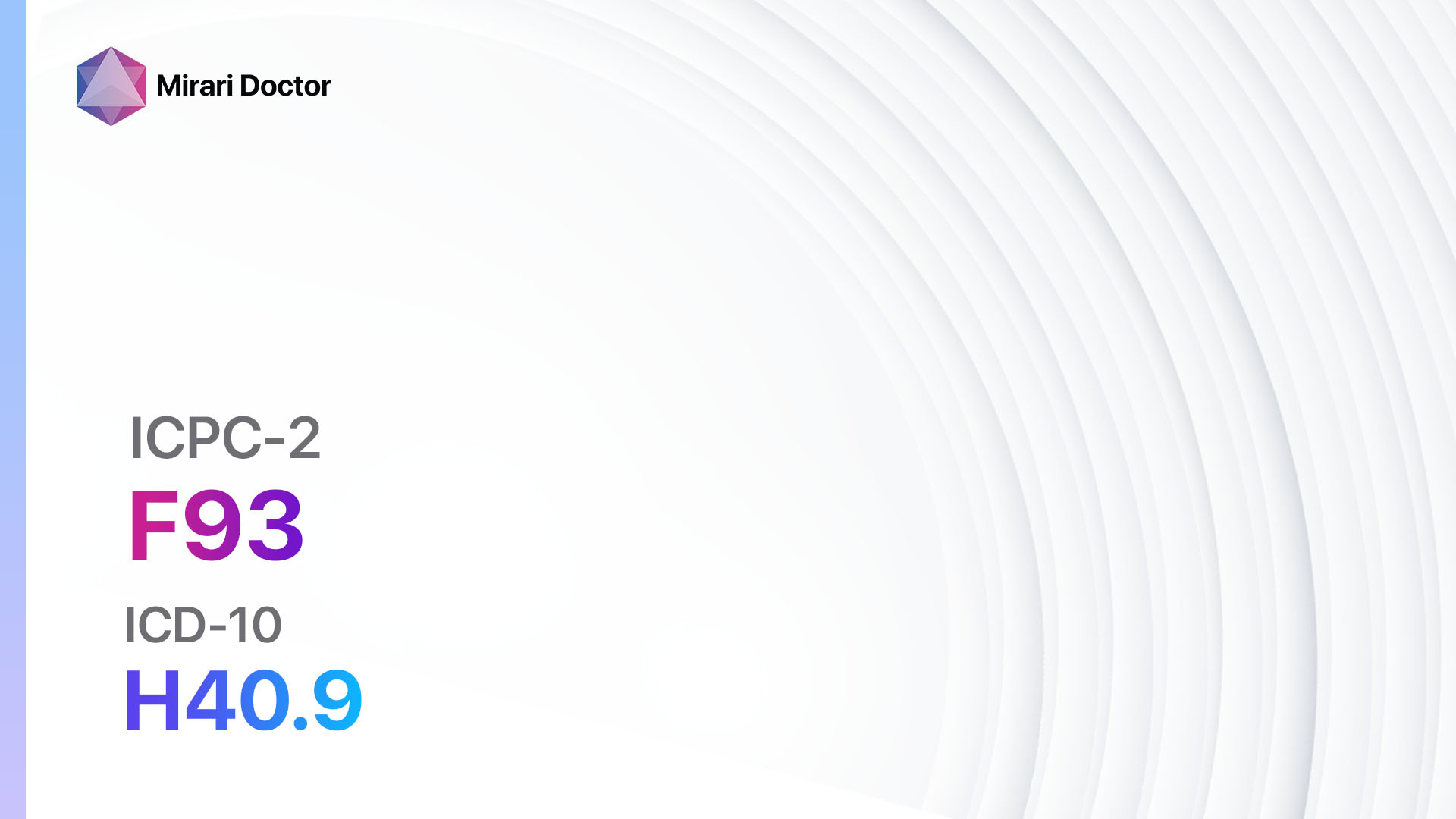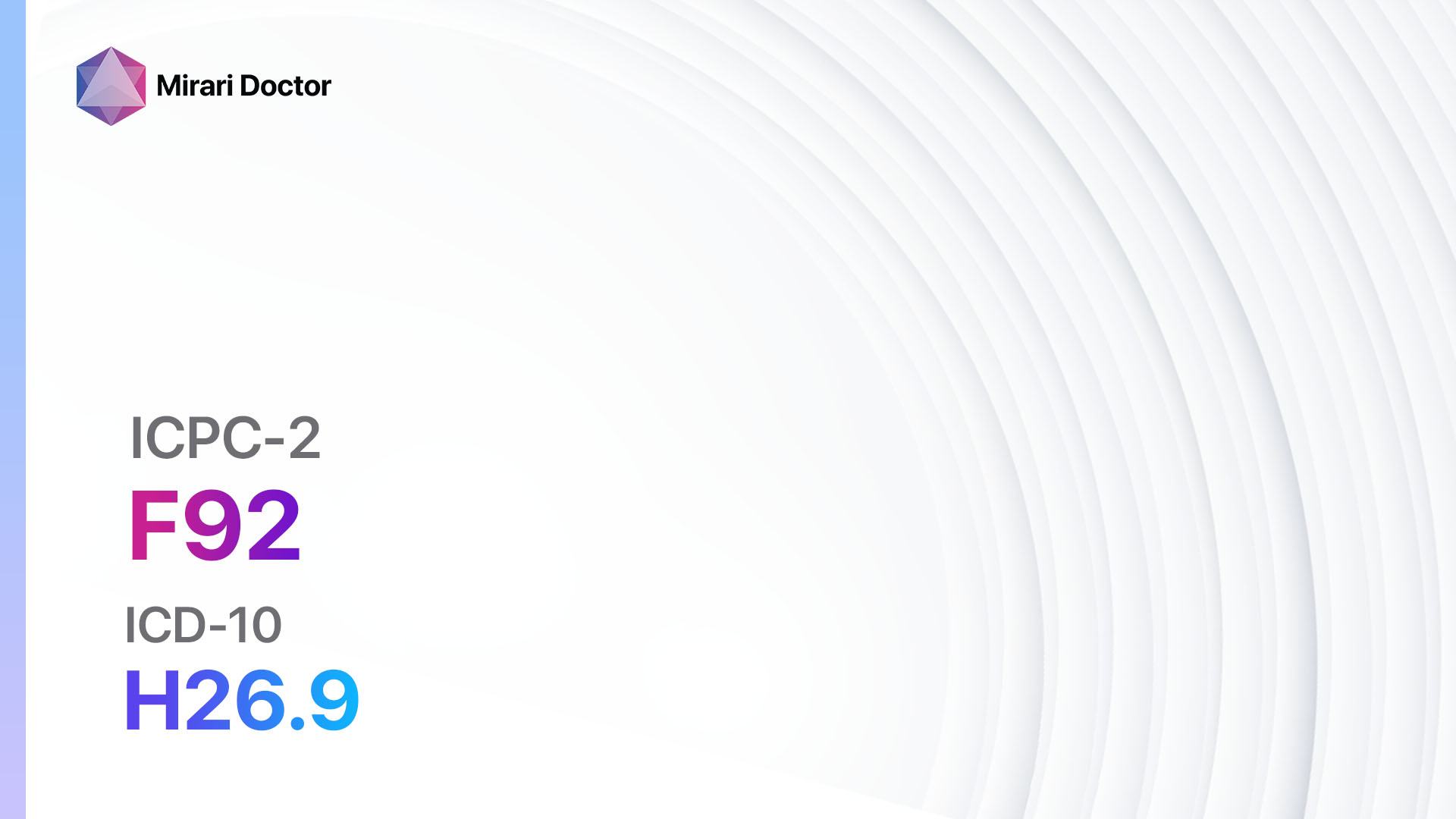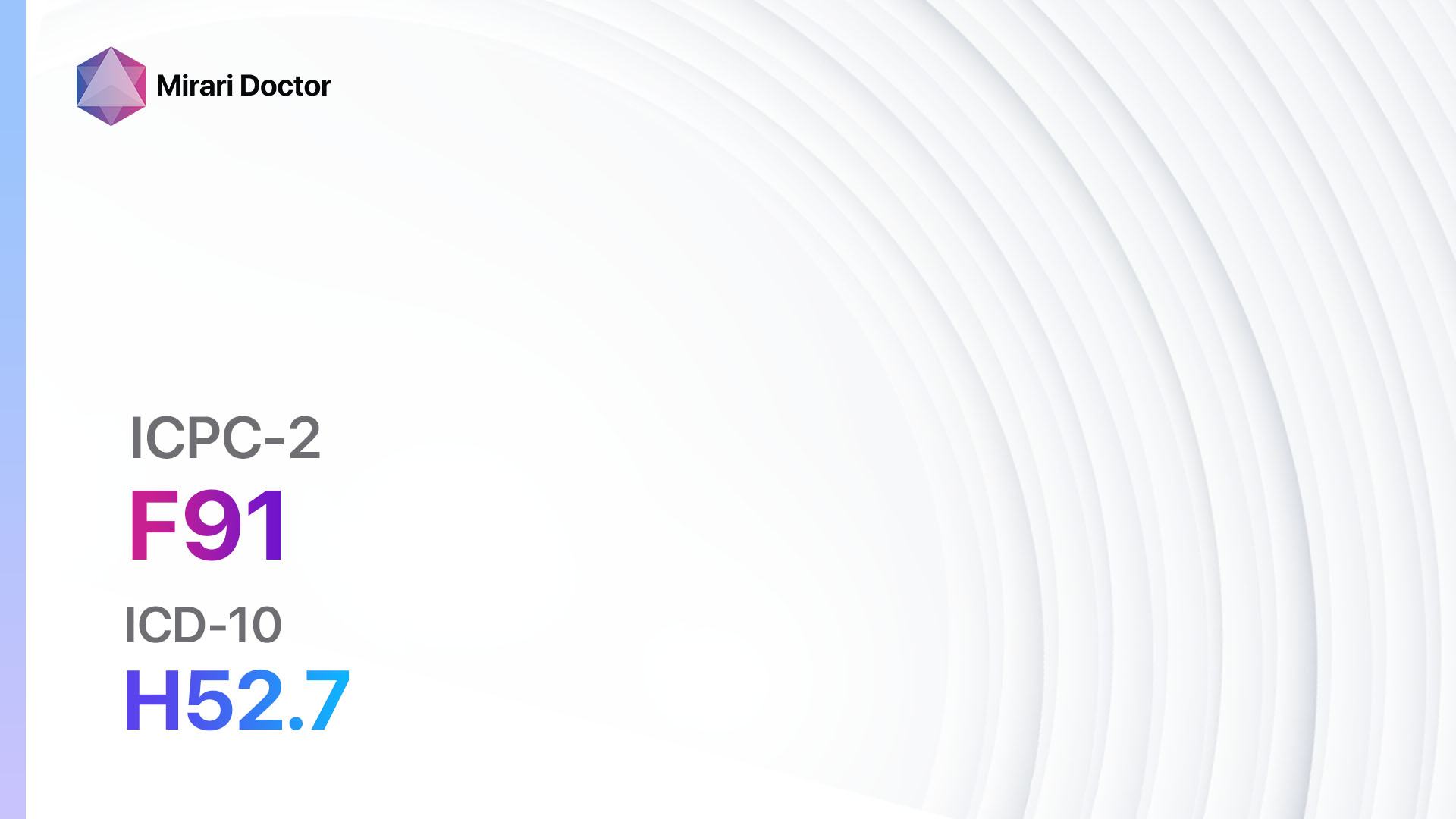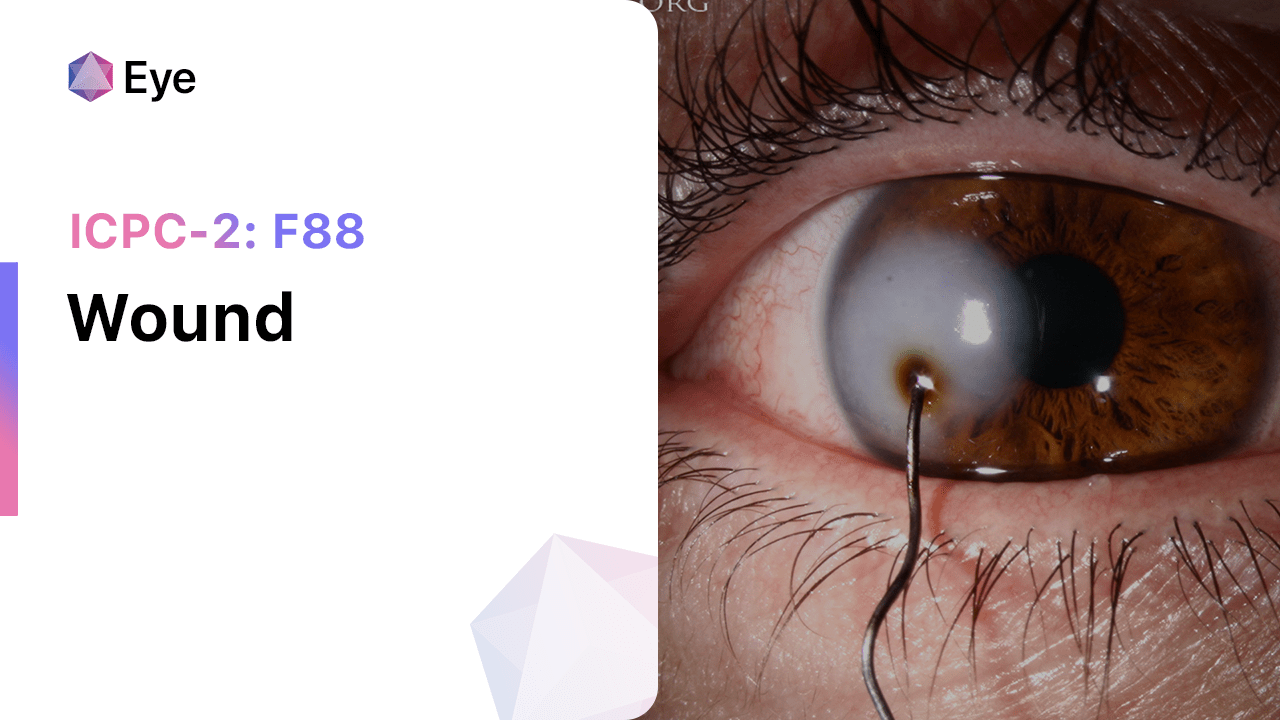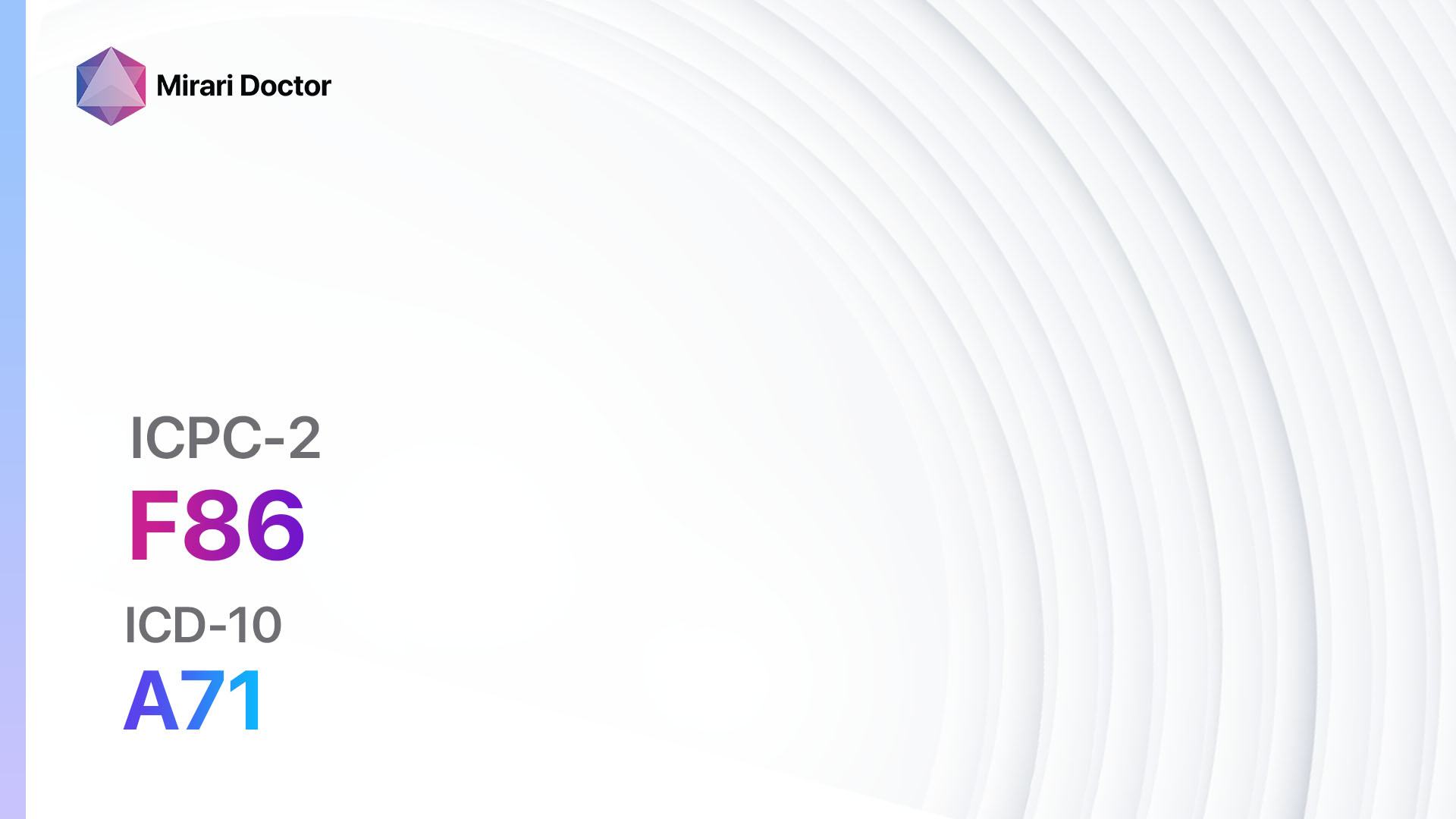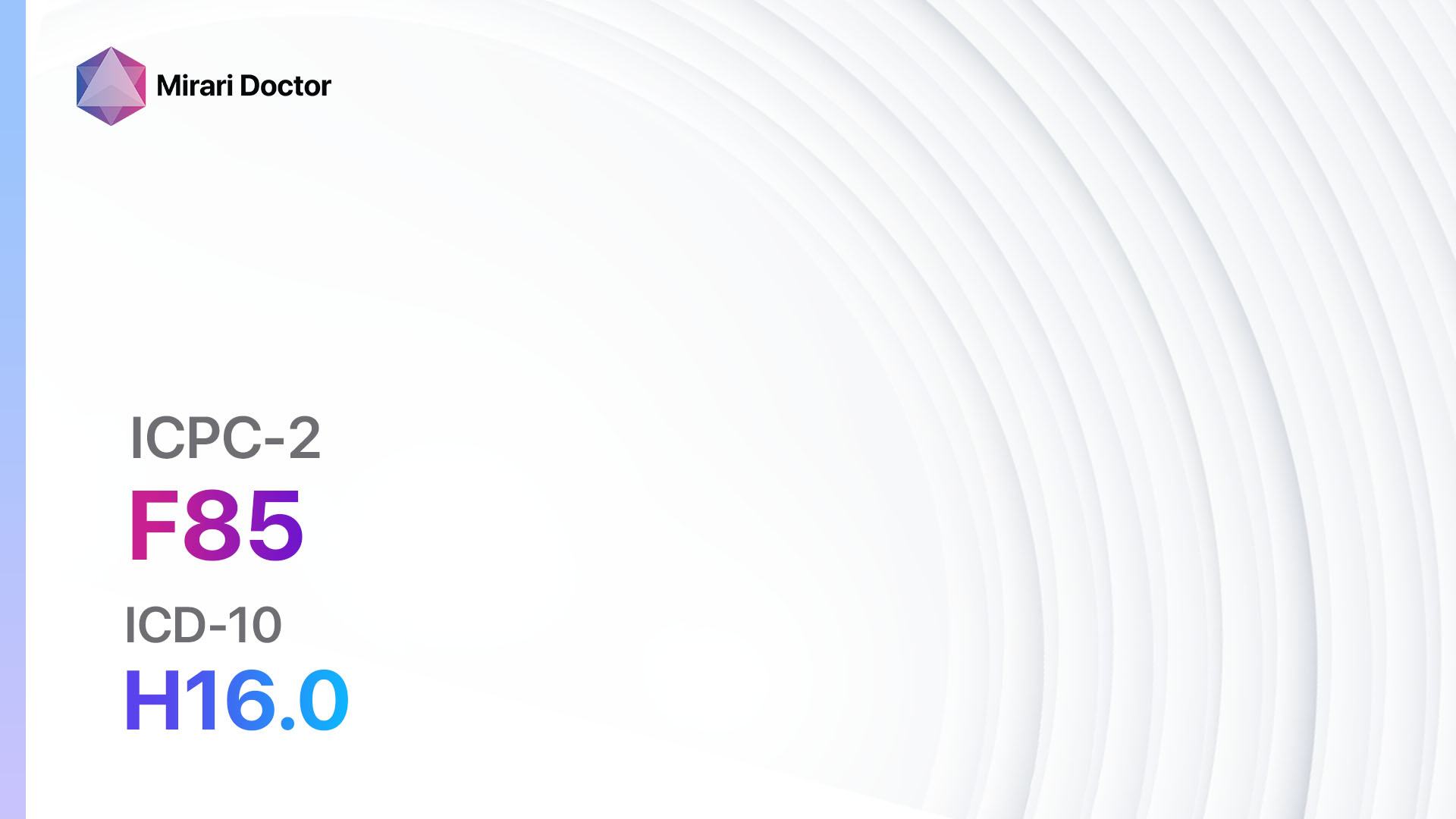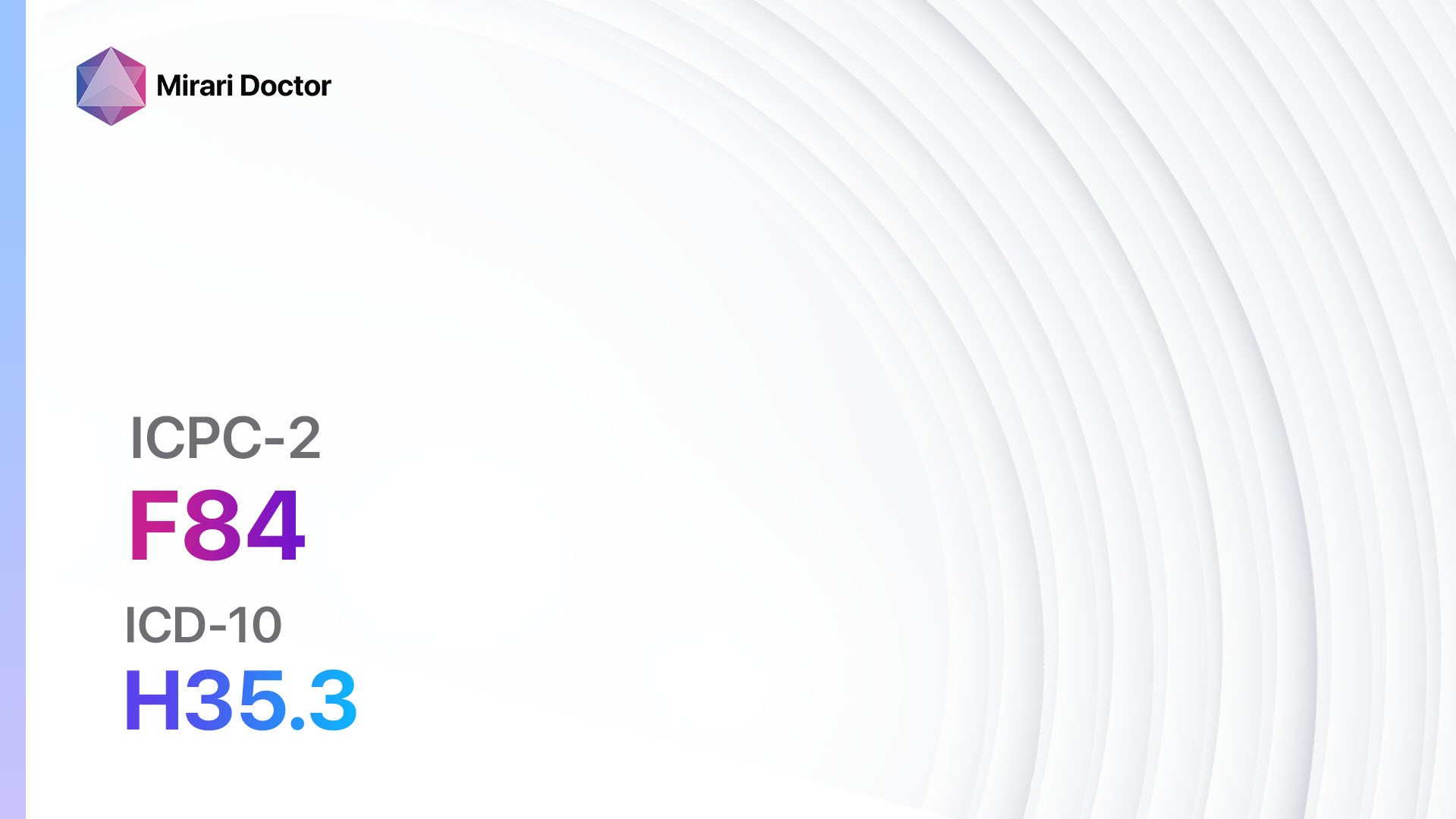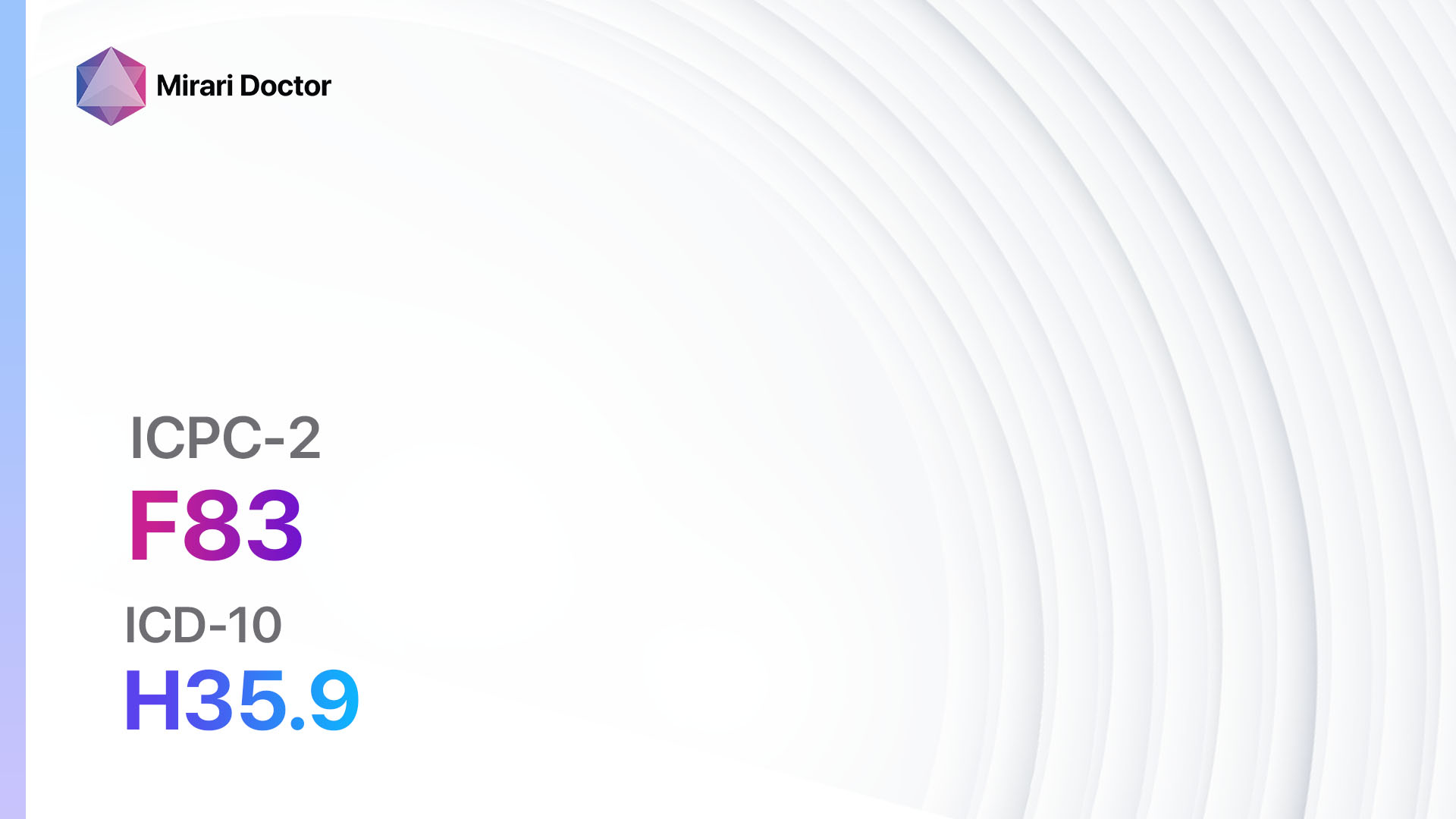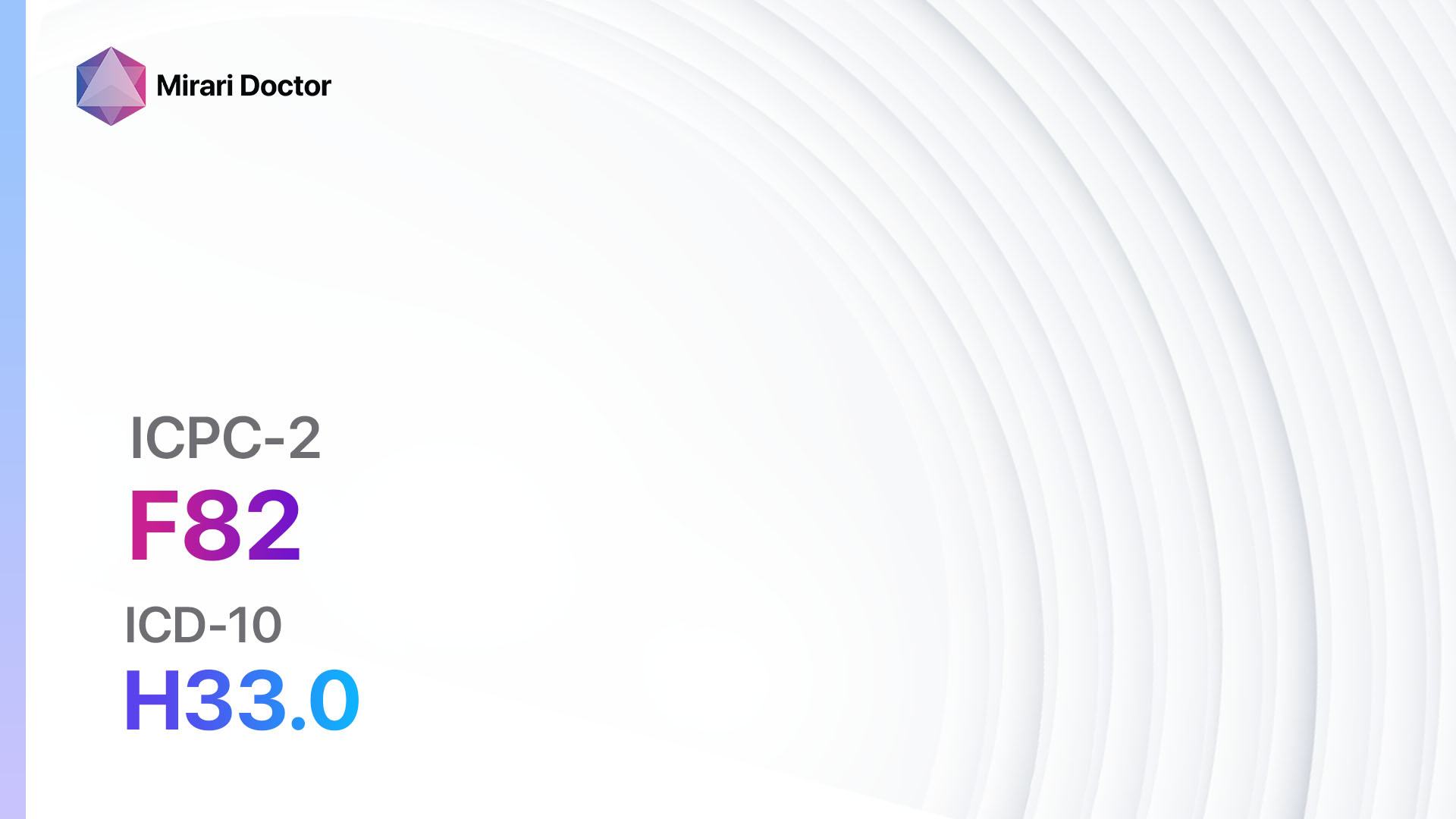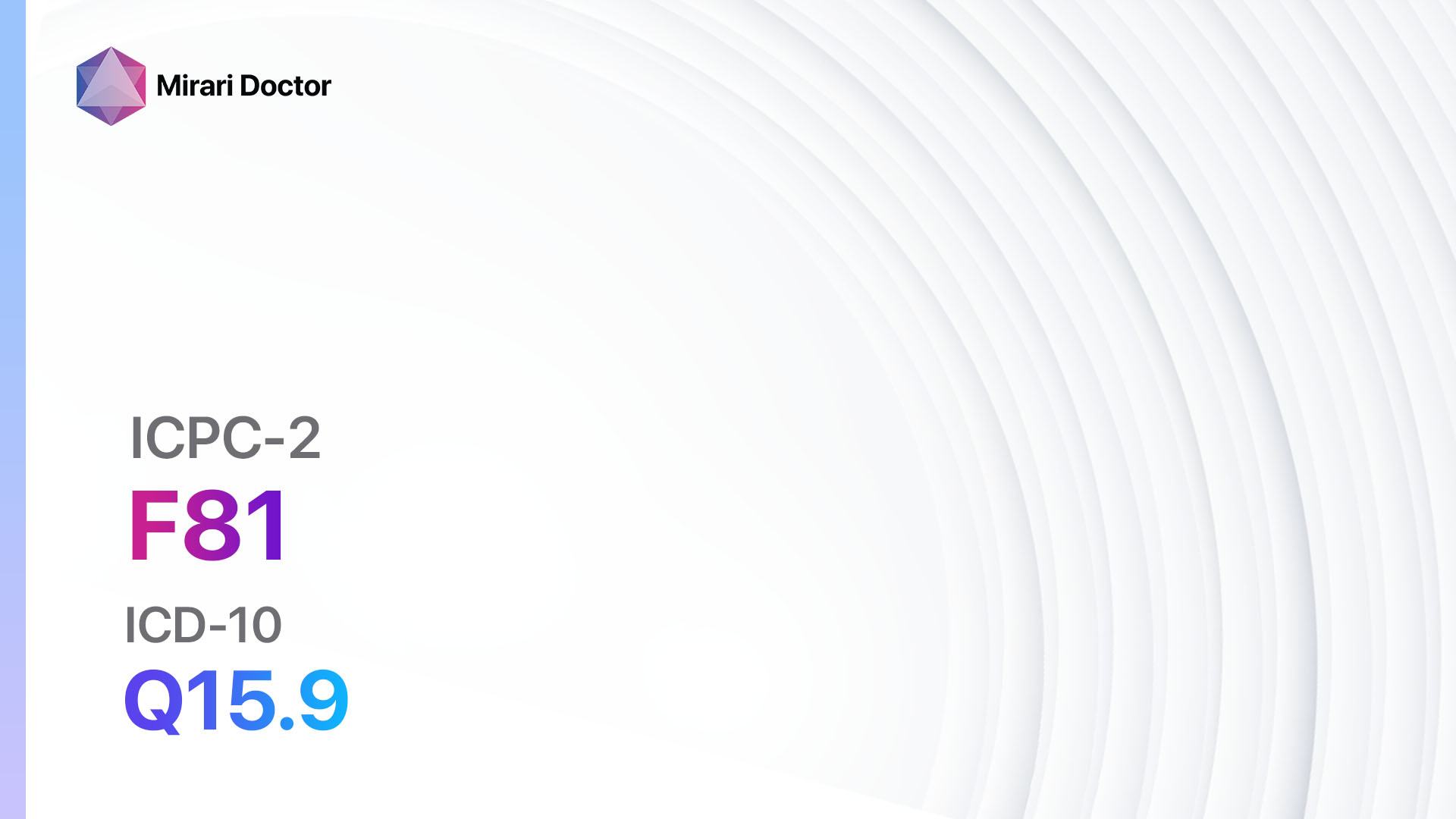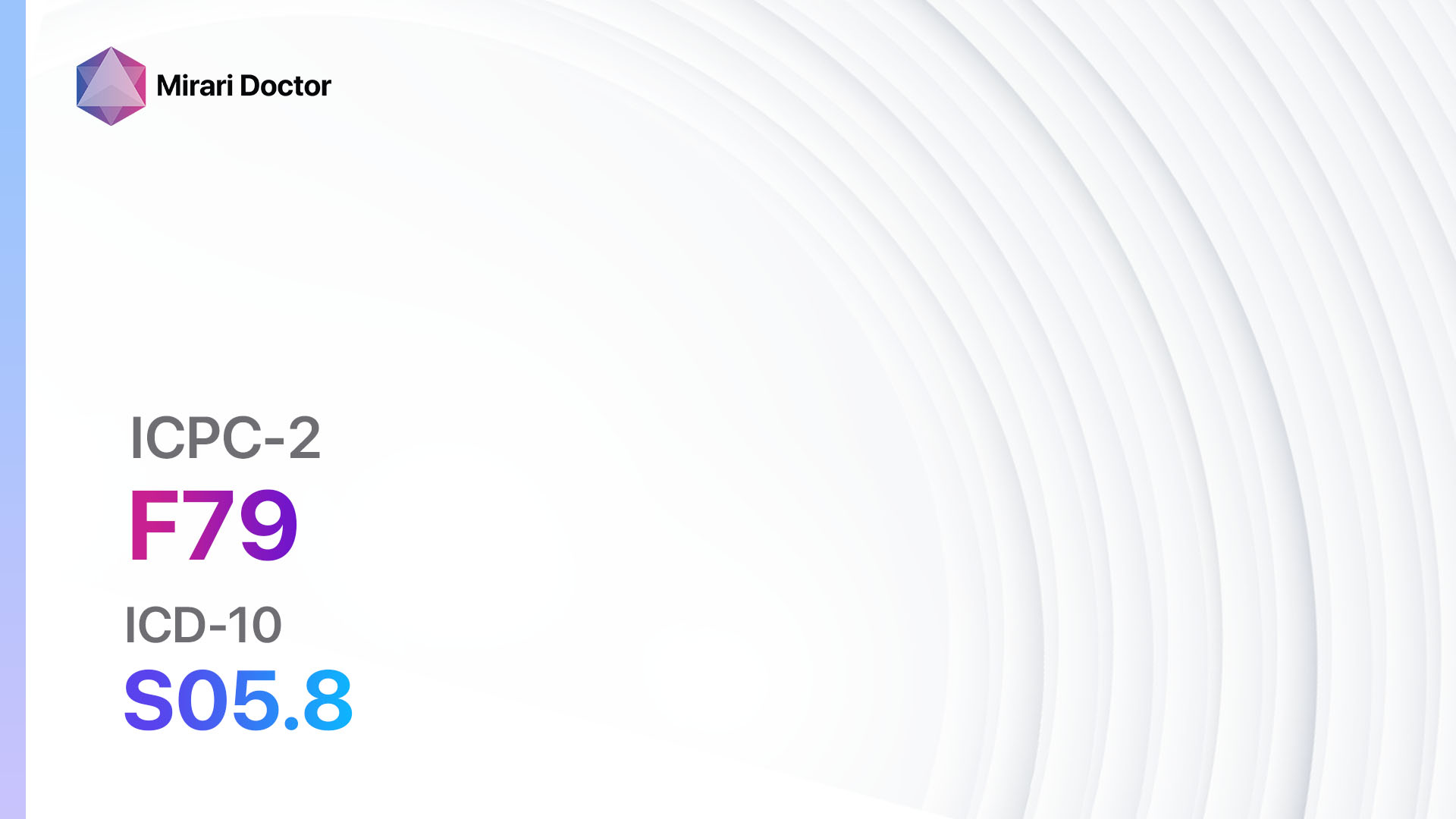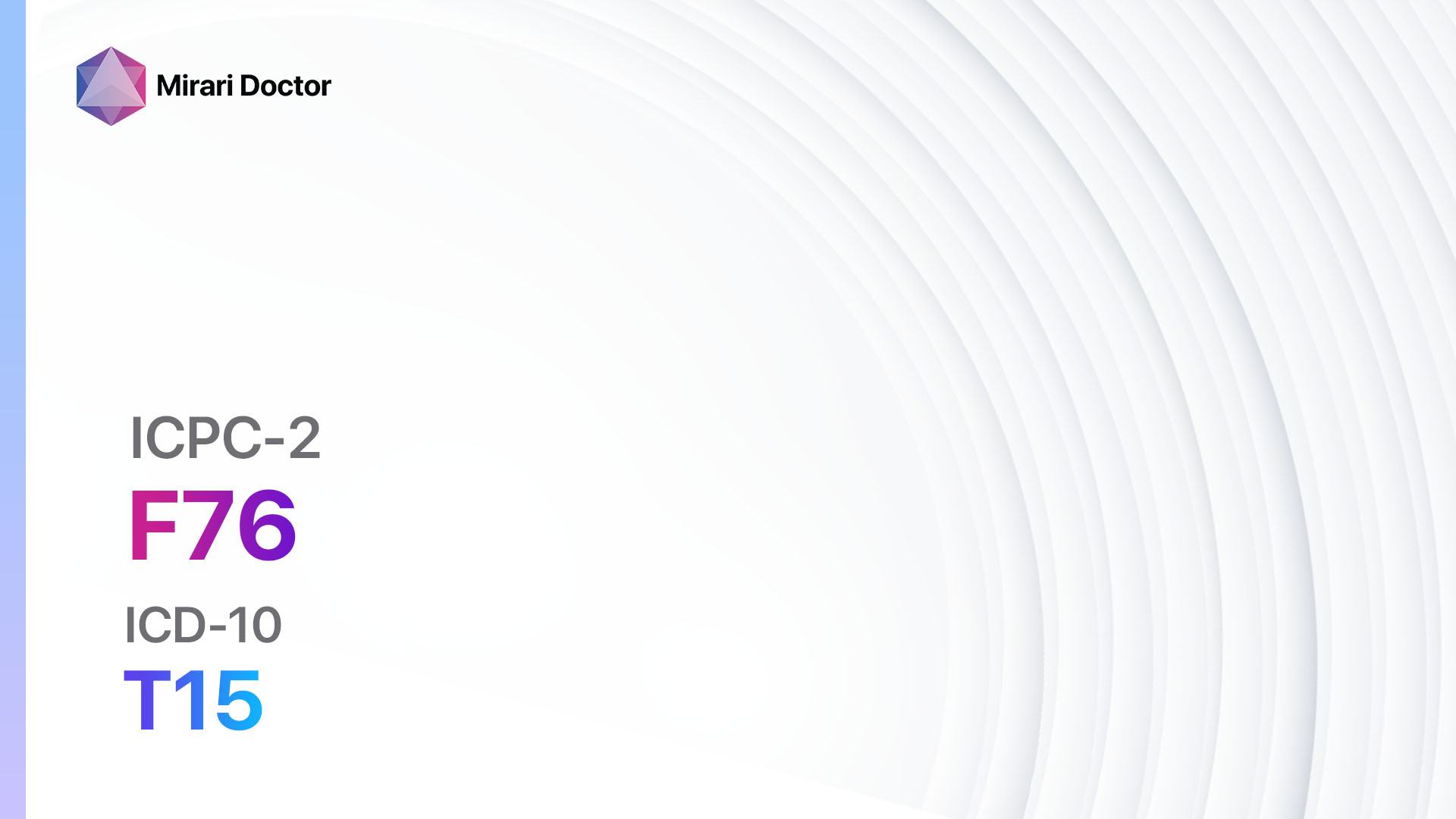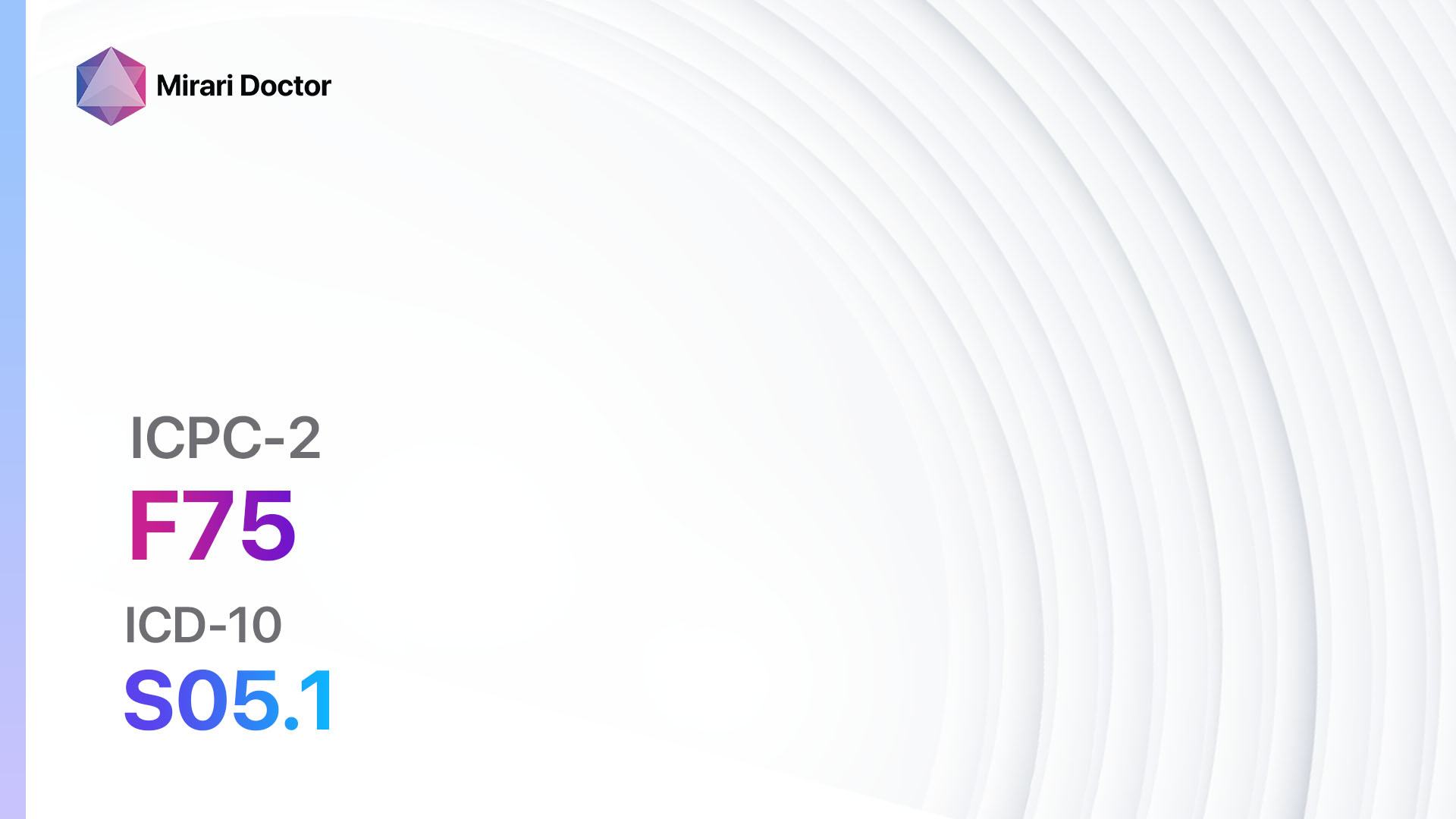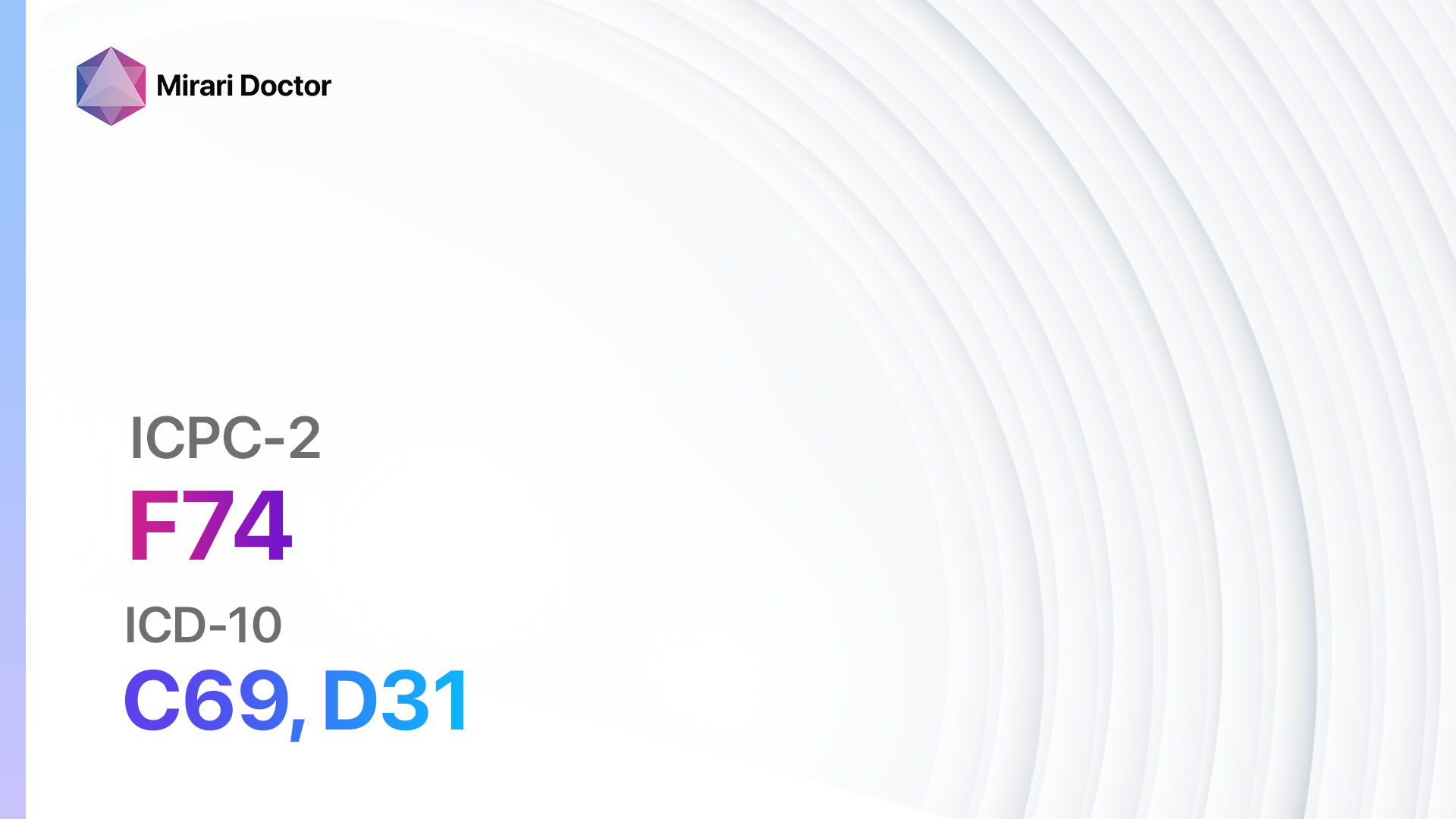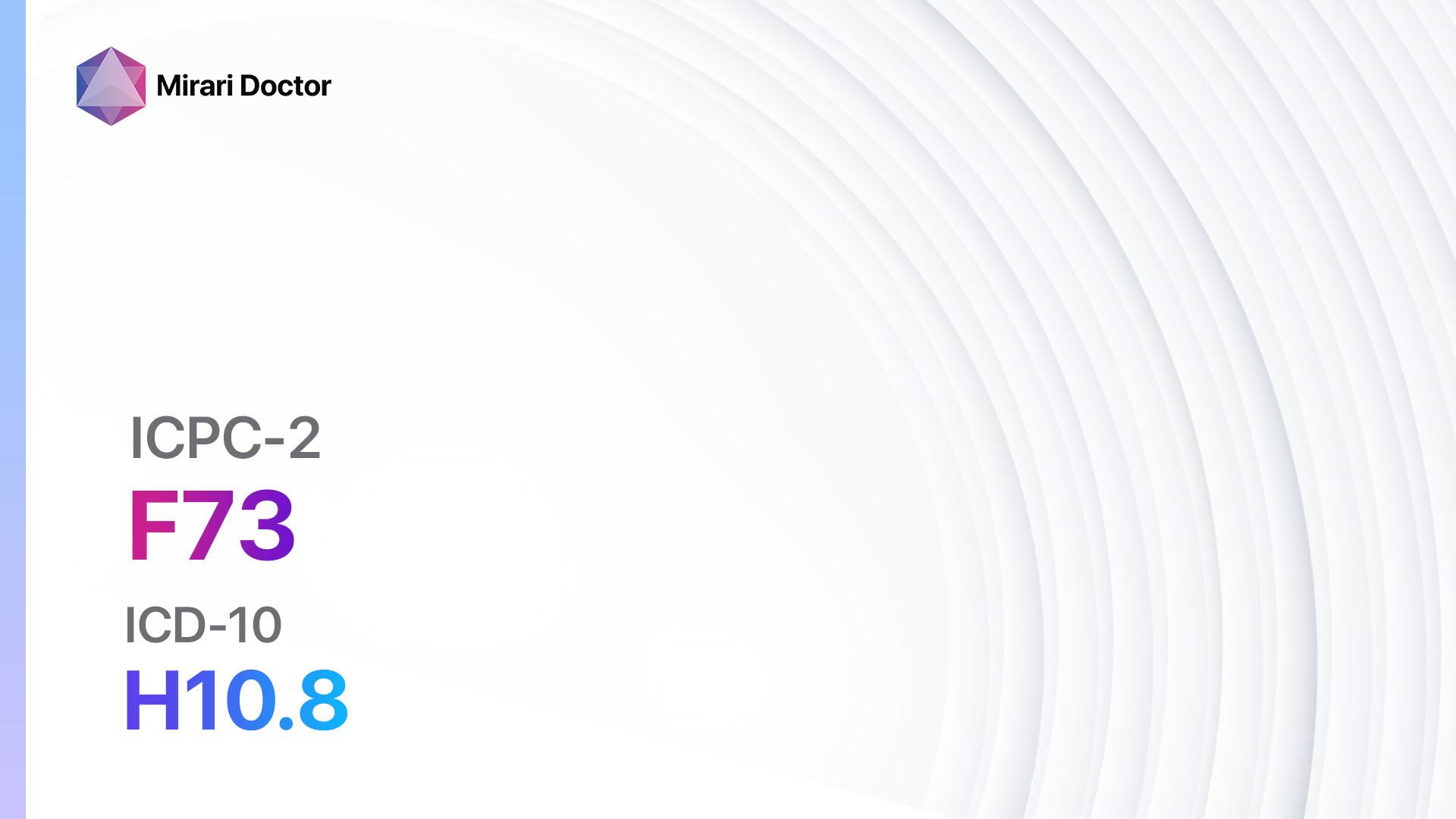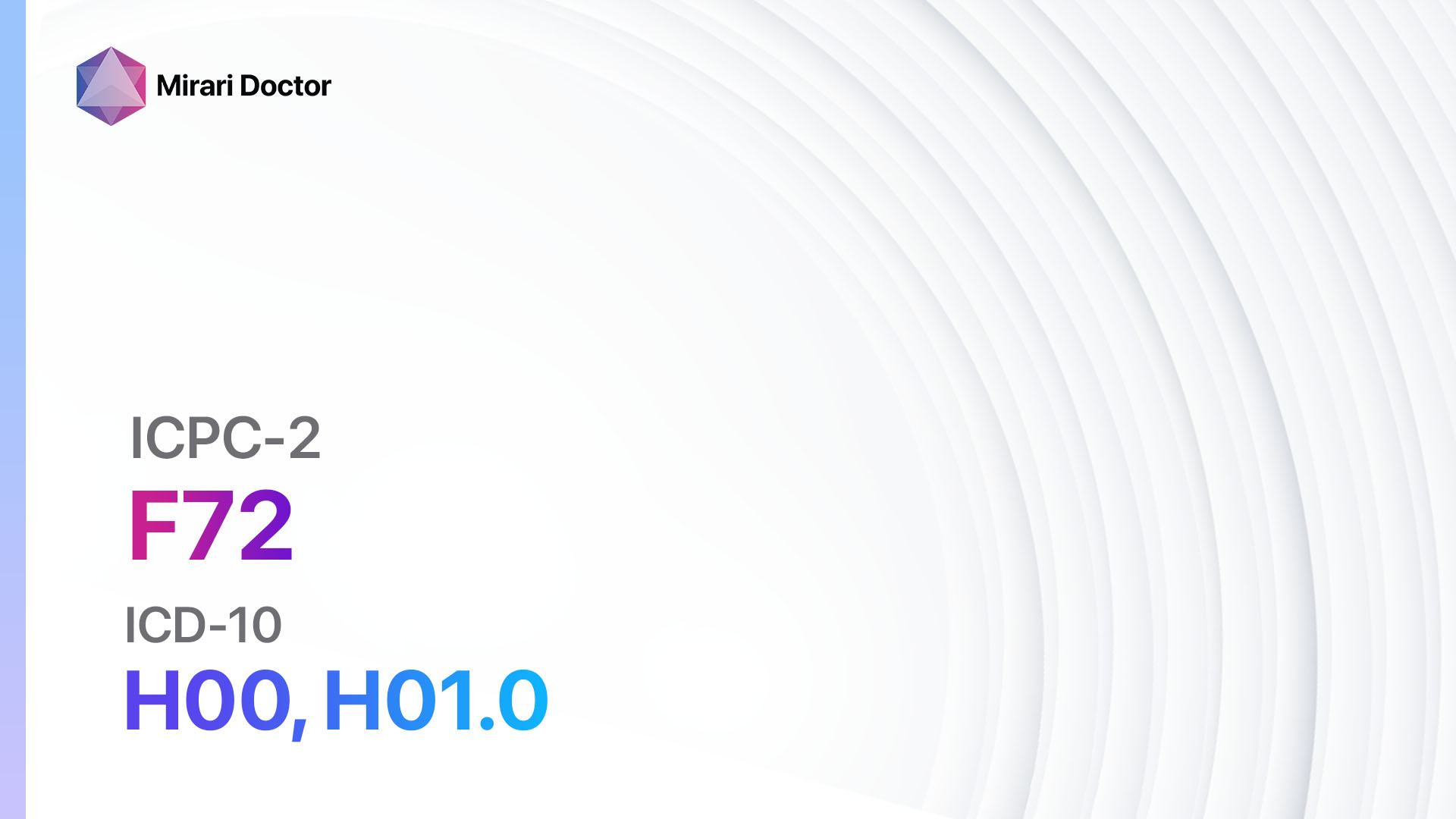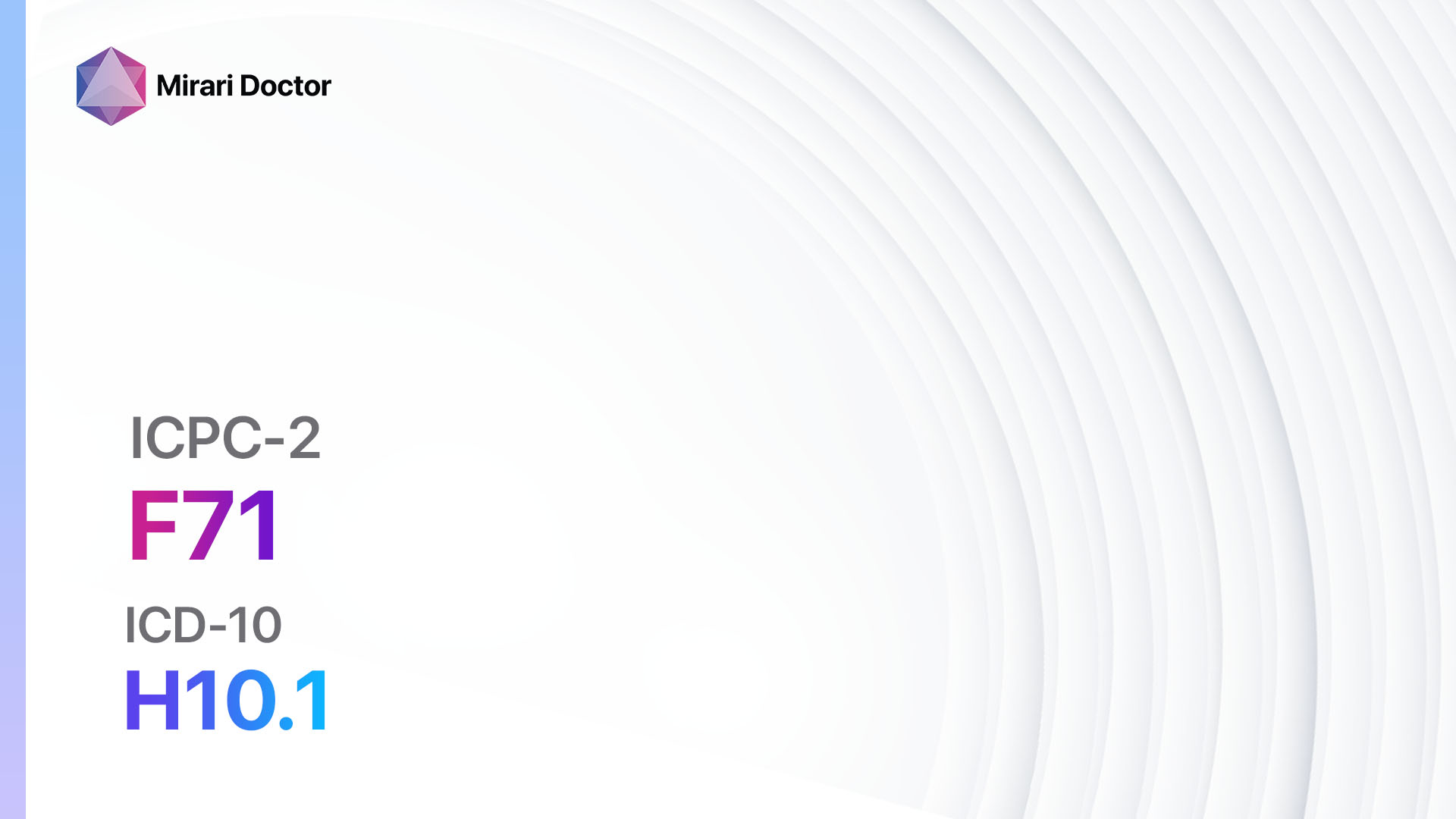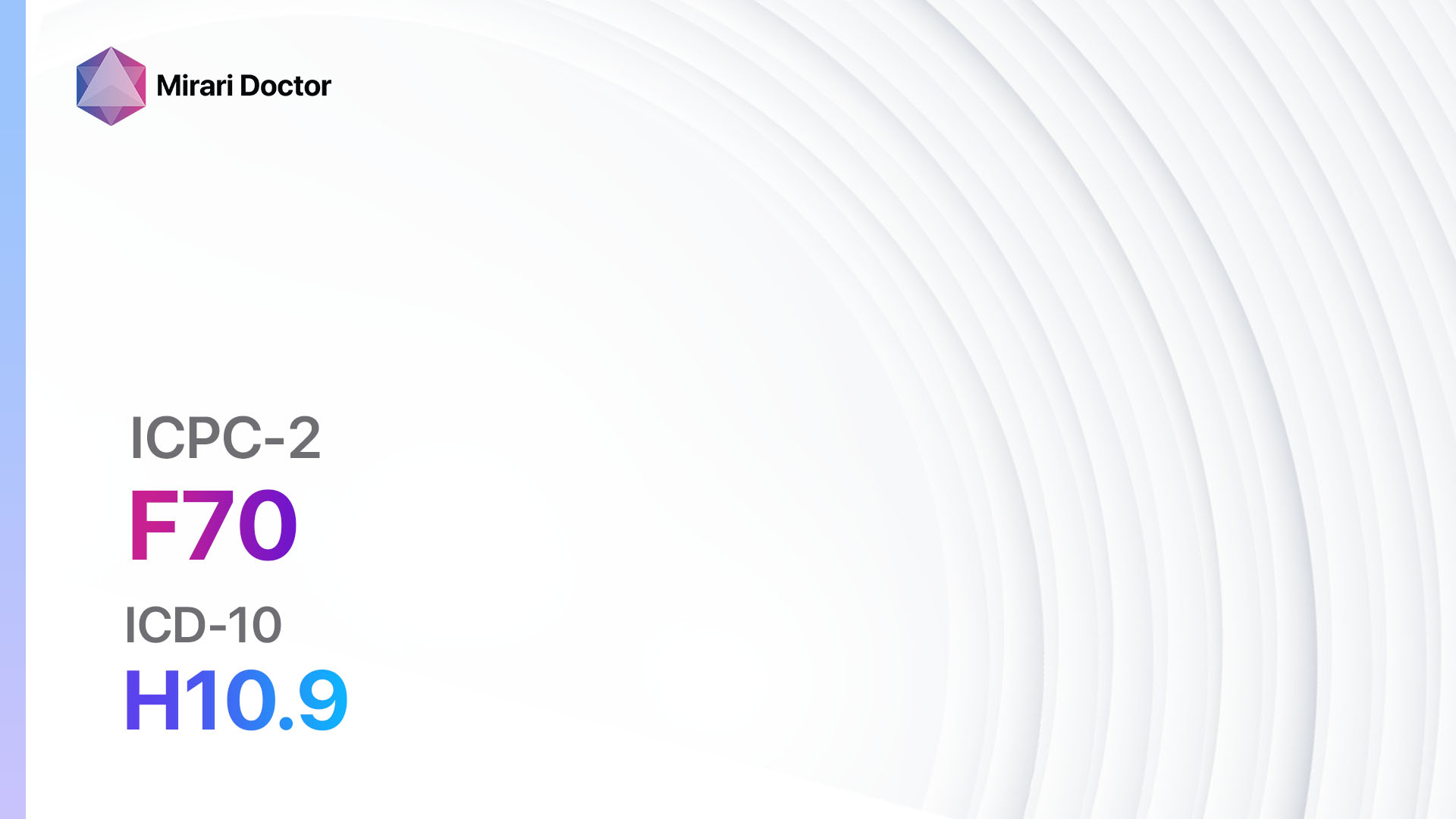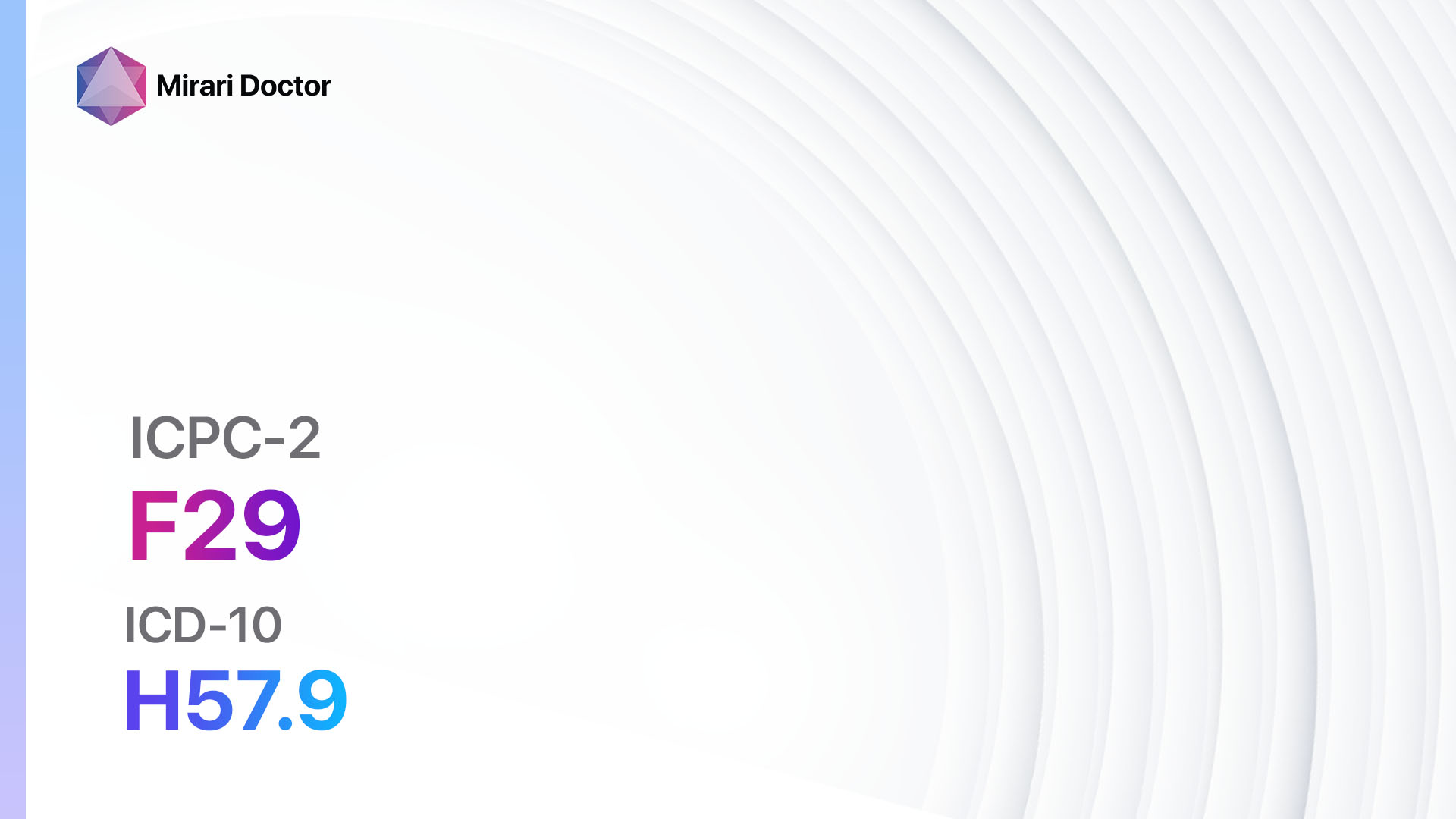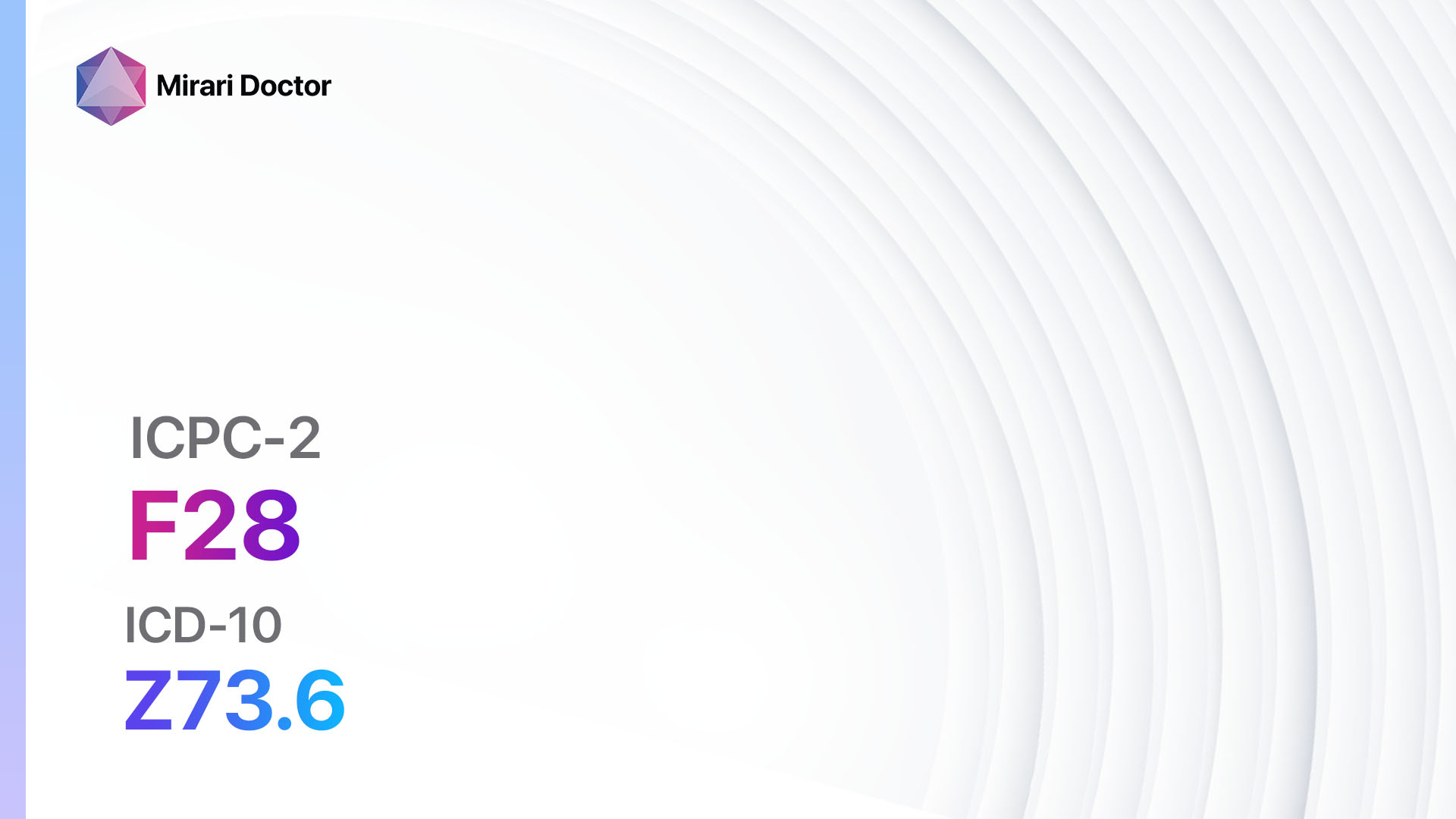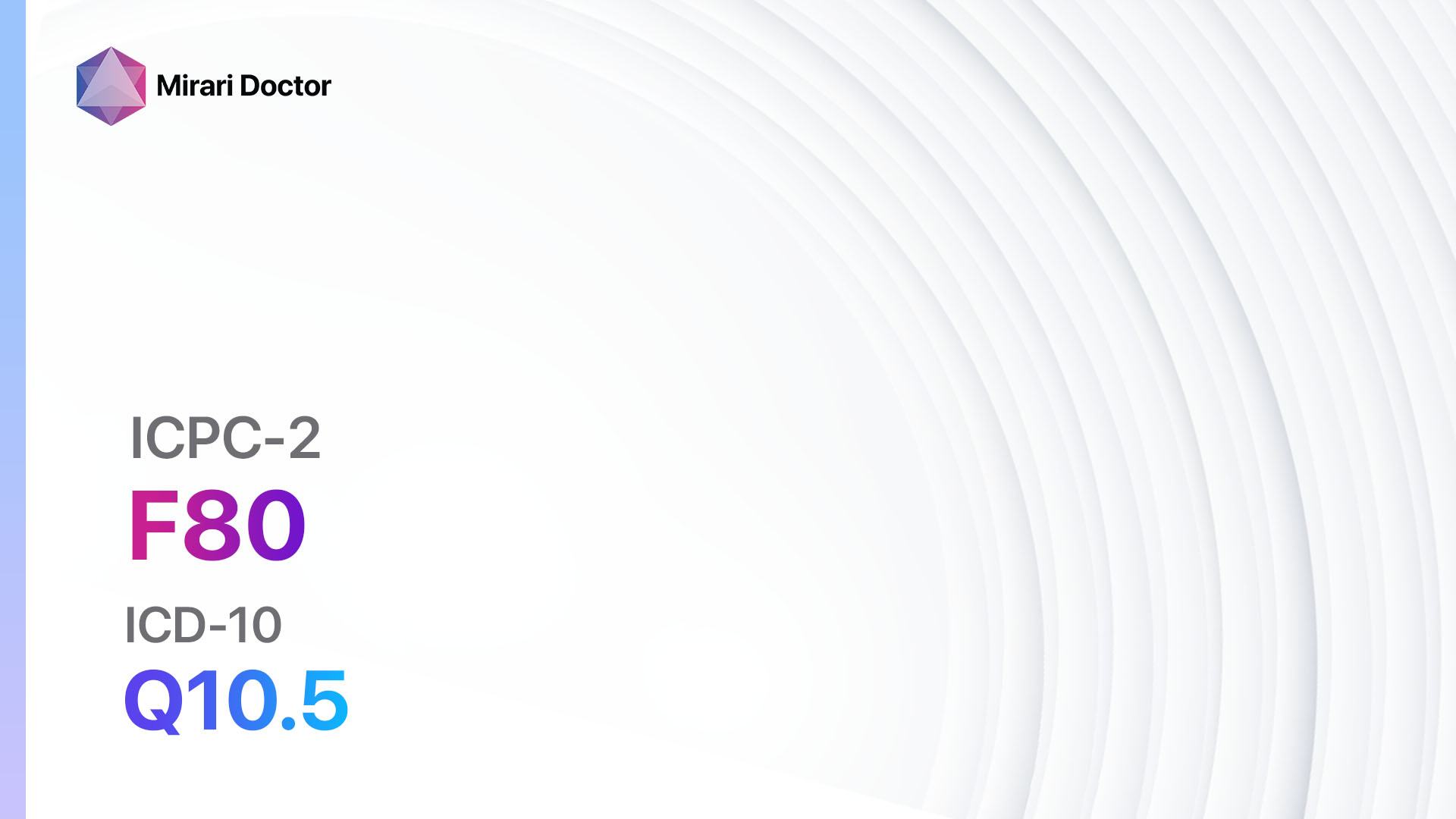
Introduction
Blocked lacrimal duct in infants, also known as congenital nasolacrimal duct obstruction, is a common condition that affects newborns. It occurs when the tear duct, which carries tears from the eye to the nose, is blocked or not fully developed. This can lead to excessive tearing, discharge from the eye, and recurrent eye infections.[1][2] The aim of this guide is to provide an overview of the symptoms, causes, diagnostic steps, possible interventions, and patient education for blocked lacrimal duct in infants.
Codes
- ICPC-2 Code: F80 Blocked lacrimal duct of infant[3]
- ICD-10 Code: Q10.5 Congenital stenosis and stricture of lacrimal duct[4]
Symptoms
- Excessive tearing (epiphora): The infant’s eye may constantly tear or appear watery.[5]
- Mucus or discharge: The infant may have a yellowish or white discharge from the eye.[6]
- Recurrent eye infections: The infant may develop frequent eye infections, such as conjunctivitis.[7]
Causes
- Congenital: The most common cause of blocked lacrimal duct in infants is a congenital narrowing or obstruction of the tear duct.[8]
- Underdeveloped tear duct: In some cases, the tear duct may not be fully developed at birth, leading to a blockage.[9]
Diagnostic Steps
Medical History
- Gather information about the infant’s symptoms, including excessive tearing, discharge from the eye, and recurrent eye infections.
- Ask about any family history of blocked tear ducts or other eye conditions.
- Inquire about any previous treatments or interventions for the condition.
Physical Examination
- Observe the infant’s eyes for excessive tearing, discharge, or redness.
- Assess the infant’s eye movements and alignment.
- Perform a gentle pressure on the tear sac area to check for any blockage or obstruction.
Laboratory Tests
- No specific laboratory tests are required for the diagnosis of blocked lacrimal duct in infants.
Diagnostic Imaging
- Imaging studies, such as ultrasound or dacryocystography, may be used to visualize the tear duct and identify any blockages or abnormalities.[10]
Other Tests
- No other diagnostic tests are typically necessary for the diagnosis of blocked lacrimal duct in infants.
Follow-up and Patient Education
- Schedule a follow-up appointment to monitor the infant’s condition and assess the effectiveness of interventions.
- Educate the parents about the importance of maintaining good eye hygiene, including cleaning the eye with warm water and gentle massage of the tear duct area.
- Provide information about signs of infection or worsening symptoms that require immediate medical attention.
Possible Interventions
Traditional Interventions
Medications:
Top 5 drugs for Blocked lacrimal duct of infant:
- Topical antibiotics (e.g., erythromycin ointment):
- Cost: $10-$20 per tube.
- Contraindications: Hypersensitivity to erythromycin.
- Side effects: Local irritation or allergic reactions.
- Severe side effects: Rare, but can include severe allergic reactions.
- Drug interactions: No significant drug interactions.
- Warning: Use as directed and avoid contact with the eyes.
- Topical corticosteroids (e.g., dexamethasone eye drops):
- Cost: $10-$30 per bottle.
- Contraindications: Active viral or fungal eye infections.
- Side effects: Local irritation, increased intraocular pressure.
- Severe side effects: Rare, but can include cataract formation or glaucoma.
- Drug interactions: No significant drug interactions.
- Warning: Use as directed and avoid prolonged use.
- Topical decongestants (e.g., phenylephrine eye drops):
- Cost: $5-$15 per bottle.
- Contraindications: Hypersensitivity to phenylephrine.
- Side effects: Local irritation, increased heart rate.
- Severe side effects: Rare, but can include severe allergic reactions or cardiovascular effects.
- Drug interactions: No significant drug interactions.
- Warning: Use as directed and avoid prolonged use.
- Topical lubricants (e.g., artificial tears):
- Cost: $5-$15 per bottle.
- Contraindications: Hypersensitivity to the ingredients.
- Side effects: None.
- Severe side effects: None.
- Drug interactions: No significant drug interactions.
- Warning: Use as directed and avoid contamination of the bottle.
- Oral antibiotics (e.g., amoxicillin):
- Cost: $10-$30 per course.
- Contraindications: Hypersensitivity to amoxicillin or penicillin.
- Side effects: Upset stomach, diarrhea.
- Severe side effects: Rare, but can include severe allergic reactions or antibiotic-associated diarrhea.
- Drug interactions: No significant drug interactions.
- Warning: Use as directed and complete the full course of treatment.
Surgical Procedures:
- Probing and irrigation: A thin probe is inserted into the tear duct to open the blockage and flush out any debris. Cost: $500-$1,500.
- Balloon catheter dilation: A deflated balloon catheter is inserted into the tear duct and inflated to widen the blocked area. Cost: $1,000-$2,000.
- Intubation: A silicone tube is inserted into the tear duct to keep it open and allow tears to drain properly. Cost: $1,500-$3,000.
Alternative Interventions
- Massage therapy: Gentle massage of the tear duct area can help open the blockage. Cost: $50-$100 per session.
- Warm compresses: Applying warm compresses to the eye can help relieve symptoms and promote tear drainage. Cost: $10-$20 for a warm compress kit.
- Homeopathic remedies: Some homeopathic remedies, such as Euphrasia eye drops, are believed to help with blocked tear ducts. Cost: $10-$20 per bottle.
- Chiropractic adjustments: Chiropractic adjustments may help improve the alignment of the bones around the tear duct and promote proper drainage. Cost: $50-$100 per session.
- Acupuncture: Acupuncture may help stimulate the flow of energy and promote healing. Cost: $60-$120 per session.
Lifestyle Interventions
- Good eye hygiene: Regularly cleaning the eye with warm water and gentle massage can help open the tear duct and promote drainage. Cost: Minimal.
- Avoiding eye irritants: Avoid exposing the infant’s eyes to irritants, such as smoke or dust, which can worsen symptoms. Cost: Minimal.
- Breastfeeding: Breastfeeding can help boost the infant’s immune system and reduce the risk of eye infections. Cost: Minimal.
- Maintaining a clean environment: Keeping the infant’s environment clean and free from dust or allergens can help prevent eye irritation. Cost: Minimal.
- Using a humidifier: Using a humidifier in the infant’s room can help keep the air moist and prevent dryness of the eyes. Cost: $20-$50 for a humidifier.
It is important to note that the cost ranges provided are approximate and may vary depending on the location and availability of the interventions.
Mirari Cold Plasma Alternative Intervention
Understanding Mirari Cold Plasma
- Safe and Non-Invasive Treatment: Mirari Cold Plasma is a safe and non-invasive treatment option for various skin conditions. It does not require incisions, minimizing the risk of scarring, bleeding, or tissue damage.
- Efficient Extraction of Foreign Bodies: Mirari Cold Plasma facilitates the removal of foreign bodies from the skin by degrading and dissociating organic matter, allowing easier access and extraction.
- Pain Reduction and Comfort: Mirari Cold Plasma has a local analgesic effect, providing pain relief during the treatment, making it more comfortable for the patient.
- Reduced Risk of Infection: Mirari Cold Plasma has antimicrobial properties, effectively killing bacteria and reducing the risk of infection.
- Accelerated Healing and Minimal Scarring: Mirari Cold Plasma stimulates wound healing and tissue regeneration, reducing healing time and minimizing the formation of scars.
Mirari Cold Plasma Prescription
Video instructions for using Mirari Cold Plasma Device – F80 Blocked lacrimal duct of infant (ICD-10:Q10.5)
| Mild | Moderate | Severe |
| Mode setting: 1 (Infection) Location: 7 (Neuro system & ENT) Morning: 15 minutes, Evening: 15 minutes |
Mode setting: 1 (Infection) Location: 7 (Neuro system & ENT) Morning: 30 minutes, Lunch: 30 minutes, Evening: 30 minutes |
Mode setting: 1 (Infection) Location: 7 (Neuro system & ENT) Morning: 30 minutes, Lunch: 30 minutes, Evening: 30 minutes |
| Mode setting: 2 (Wound Healing) Location: 7 (Neuro system & ENT) Morning: 15 minutes, Evening: 15 minutes |
Mode setting: 2 (Wound Healing) Location: 7 (Neuro system & ENT) Morning: 30 minutes, Lunch: 30 minutes, Evening: 30 minutes |
Mode setting: 2 (Wound Healing) Location: 7 (Neuro system & ENT) Morning: 30 minutes, Lunch: 30 minutes, Evening: 30 minutes |
| Mode setting: 3 (Antiviral Therapy) Location: 7 (Neuro system & ENT) Morning: 15 minutes, Evening: 15 minutes |
Mode setting: 3 (Antiviral Therapy) Location: 7 (Neuro system & ENT) Morning: 30 minutes, Lunch: 30 minutes, Evening: 30 minutes |
Mode setting: 3 (Antiviral Therapy) Location: 7 (Neuro system & ENT) Morning: 30 minutes, Lunch: 30 minutes, Evening: 30 minutes |
| Total Morning: 45 minutes approx. $7.50 USD, Evening: 45 minutes approx. $7.50 USD |
Total Morning: 90 minutes approx. $15 USD, Lunch: 90 minutes approx. $15 USD, Evening: 90 minutes approx. $15 USD, |
Total Morning: 90 minutes approx. $15 USD, Lunch: 90 minutes approx. $15 USD, Evening: 90 minutes approx. $15 USD, |
| Usual treatment for 7-60 days approx. $105 USD – $900 USD | Usual treatment for 6-8 weeks approx. $1,890 USD – $2,520 USD |
Usual treatment for 3-6 months approx. $4,050 USD – $8,100 USD
|
 |
|
Use the Mirari Cold Plasma device to treat Blocked lacrimal duct of infant effectively.
WARNING: MIRARI COLD PLASMA IS DESIGNED FOR THE HUMAN BODY WITHOUT ANY ARTIFICIAL OR THIRD PARTY PRODUCTS. USE OF OTHER PRODUCTS IN COMBINATION WITH MIRARI COLD PLASMA MAY CAUSE UNPREDICTABLE EFFECTS, HARM OR INJURY. PLEASE CONSULT A MEDICAL PROFESSIONAL BEFORE COMBINING ANY OTHER PRODUCTS WITH USE OF MIRARI.
Step 1: Cleanse the Skin
- Start by cleaning the affected area of the skin with a gentle cleanser or mild soap and water. Gently pat the area dry with a clean towel.
Step 2: Prepare the Mirari Cold Plasma device
- Ensure that the Mirari Cold Plasma device is fully charged or has fresh batteries as per the manufacturer’s instructions. Make sure the device is clean and in good working condition.
- Switch on the Mirari device using the power button or by following the specific instructions provided with the device.
- Some Mirari devices may have adjustable settings for intensity or treatment duration. Follow the manufacturer’s instructions to select the appropriate settings based on your needs and the recommended guidelines.
Step 3: Apply the Device
- Place the Mirari device in direct contact with the affected area of the skin. Gently glide or hold the device over the skin surface, ensuring even coverage of the area experiencing.
- Slowly move the Mirari device in a circular motion or follow a specific pattern as indicated in the user manual. This helps ensure thorough treatment coverage.
Step 4: Monitor and Assess:
- Keep track of your progress and evaluate the effectiveness of the Mirari device in managing your Blocked lacrimal duct of infant. If you have any concerns or notice any adverse reactions, consult with your health care professional.
Note
This guide is for informational purposes only and should not replace the advice of a medical professional. Always consult with your healthcare provider or a qualified medical professional for personal advice, diagnosis, or treatment. Do not solely rely on the information presented here for decisions about your health. Use of this information is at your own risk. The authors of this guide, nor any associated entities or platforms, are not responsible for any potential adverse effects or outcomes based on the content.
Mirari Cold Plasma System Disclaimer
- Purpose: The Mirari Cold Plasma System is a Class 2 medical device designed for use by trained healthcare professionals. It is registered for use in Thailand and Vietnam. It is not intended for use outside of these locations.
- Informational Use: The content and information provided with the device are for educational and informational purposes only. They are not a substitute for professional medical advice or care.
- Variable Outcomes: While the device is approved for specific uses, individual outcomes can differ. We do not assert or guarantee specific medical outcomes.
- Consultation: Prior to utilizing the device or making decisions based on its content, it is essential to consult with a Certified Mirari Tele-Therapist and your medical healthcare provider regarding specific protocols.
- Liability: By using this device, users are acknowledging and accepting all potential risks. Neither the manufacturer nor the distributor will be held accountable for any adverse reactions, injuries, or damages stemming from its use.
- Geographical Availability: This device has received approval for designated purposes by the Thai and Vietnam FDA. As of now, outside of Thailand and Vietnam, the Mirari Cold Plasma System is not available for purchase or use.
References
- Congenital Nasolacrimal Duct Obstruction (CNLDO): A Review. Vagge A, Ferro Desideri L, Nucci P, Serafino M, Giannaccare G, Lembo A. Clin Ophthalmol. 2019;13:2369-2376. doi:10.2147/OPTH.S221984
- Congenital Nasolacrimal Duct Obstruction. Walling A, Fortenbach CR, Larson SA, Kemp PS. EyeRounds.org. Posted May 13, 2020. Available from https://EyeRounds.org/cases/296-congenital-nasolacrimal-duct-obstruction.htm
- ICPC-2 Codes. World Health Organization. Available from https://www.who.int/standards/classifications/other-classifications/icpc-2
- ICD-10 Code for Congenital stenosis and stricture of lacrimal duct. AAPC Coder. Available from https://www.aapc.com/codes/icd-10-codes/Q10.5
- Tear Duct Blockage in Babies. Patient.info. Available from https://patient.info/childrens-health/tear-duct-blockage-in-babies
- Blocked Tear Duct in Children: Care Instructions. MyHealth Alberta. Available from https://myhealth.alberta.ca/Health/aftercareinformation/pages/conditions.aspx?hwid=bo1317
- Congenital Nasolacrimal Duct Obstruction. Patient.info. Available from https://patient.info/doctor/congenital-nasolacrimal-duct-obstruction
- Blocked Tear Duct (Nasolacrimal Duct Obstruction). Child and Adolescent Health Service. Available from https://pch.health.wa.gov.au/~/media/Files/Hospitals/PCH/General-documents/Patients-and-Families/Health-facts/Blocked-tear-duct.pdf
- Diagnostic method of lacrimal occlusion in neonates. Vinmec. Available from https://www.vinmec.com/en/news/health-news/pediatrics/diagnostic-method-of-lacrimal-occlusion-in-neonates/
- Treatment when babies have blocked tear ducts. Vinmec. Available from https://www.vinmec.com/en/news/health-news/pediatrics/treatment-when-babies-have-blocked-tear-ducts/
- Blocked Tear Duct. Seattle Children’s Hospital. Available from https://www.seattlechildrens.org/conditions/a-z/tear-duct-blocked/
Related articles
Made in USA


